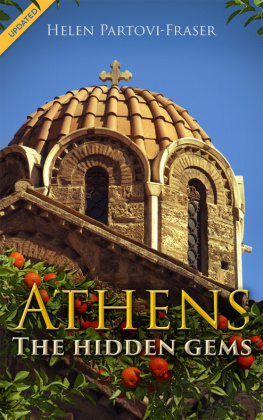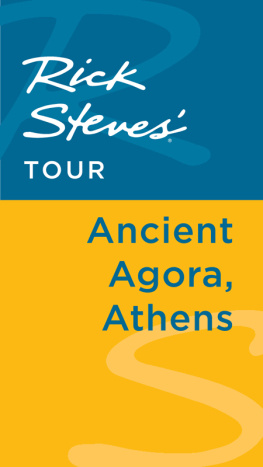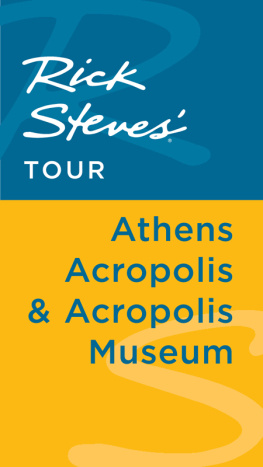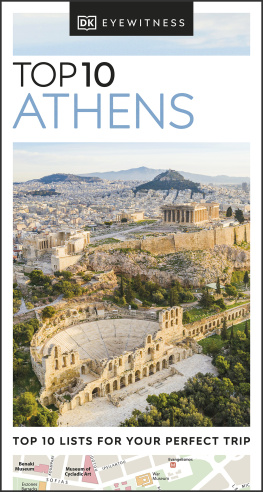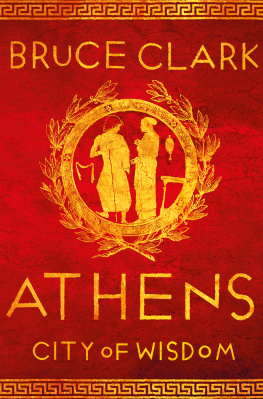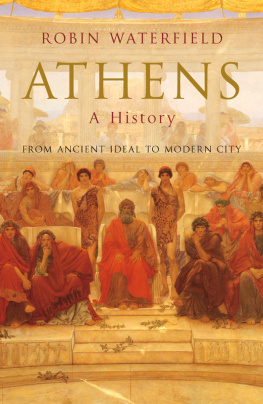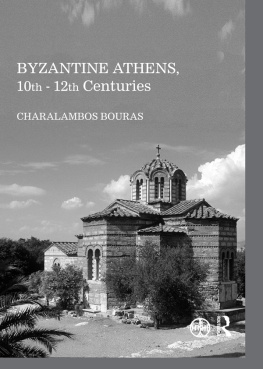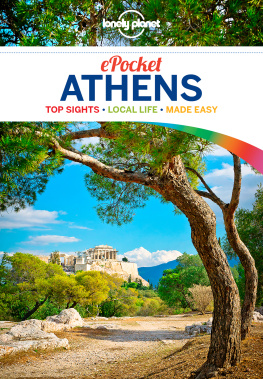MANUSCRIPT Helen Partovi-Fraser
ATHENS - The Hidden Gems
ATHENS - The Hidden Gems is protected by copyright of Helen Partovi-Fraser, 2012. No part may be reproduced in any form without the express permission of the author. Legal action will be taken against anyone found to be infringing the authors copyright. All rights reserved.
ISBN 978-1-78301-000-4
www.loveathens.com
To Leila, Laura and Lewis
Know that our city has the greatest name amongst all men because she never yields to misfortune......And even should we ever be compelled to yield a little, for it is natures way that all things bloom to suffer loss, there will abide a memory that we made our dwelling place to be a city endowed with all things, and the mightiest of all
Thucydides
CONTENTS
PREFACE
It was tantalising. Driving down through Northern Greece in the summer, we passed Mount Olympus, its peaks hidden in mist. Home of the ancient gods, haunt of the sun god Apollo, the sight of laurel trees shimmering on the banks of the stream below fired my imagination. In my minds eye I saw images of the lyre-playing god walking the slopes, and ancients in robes picking laurels to crown the winners of the Ancient Games. I was transformed back to my childhood and a world of storytelling and Greek myth.
Such was my introduction to Greece, but my interest in the Hellenic world stems from a childhood part-spent awaiting my fathers hastily-written postcards from remote archaeological digs. The stamps, with their images of seated gods and goddesses, became etched in my memory. Byzantine monasteries bounded by bare mountains, walls covered in mosaic, lodged in my mind and sparked an unending curiosity in the Ancient Greek and Byzantine world.
Following the abolition of the monarchy in 1974, Greece rapidly absorbed mass tourism and became westernized. Membership of the EU in 1981 and the 2004 Athens Olympics were accompanied by investment in a new airport and modernisation of the public transport network. With globalization and rapid industrialisation, international hotel chains mushroomed. The adoption in 2001 of the euro and the 2009 opening of the new Acropolis Museum finally bolstered Greeces international profile. Over time, old Athenian neighbourhoods have given way to modern apartment blocks, and the once clearly defined roles of men and women have been weakened by womens liberation. Irregular migration, growing crime and the economic crisis have taken their toll on Athens; no longer the city of the drachma, she has become the city of the ailing euro with soaring youth unemployment, financial meltdown and its consequences on the social fabric of the city.
However, Greece is rebuilding its image. The Greek Orthodox Church and the tightly knit family unit continually play a major role in the daily life of the communities. The emergence of volunteering charities and childrens homes (once a rarity in Greece) reflect the Greek ability to pull together in times of hardship. And still, the Greek language, national pride and peoples zest for life prevail.
A mountain of literature has been written about Athens since the Roman historian, Pausanius, wandered through the citys monuments over 2000 years ago. Since that time historians and architects, generals, politicians, poets and philosophers have walked the streets of the city in search of its secrets. After my fathers death in 2007 I set out with my daughter Laura in the turmoil of modern Athens, in the noise, traffic and heat, to rediscover the secrets of this vibrant city. The book is not a melancholy journey in search of the past, nor does it aim to discover anything new. Rather, its purpose is to stimulate interest in the history of modern Athens and its mix of cultures, emphasizing the citys classical heritage and overlooked Byzantine period (AD 364-1453).
The spring walks are organised roughly chronologically, taking in the Greco-Roman era (508 BC-AD 267), moving on through the Christian period, touching the Crusader and Ottoman eras, and concluding with modern Athens (Post Independence, 1830). The last chapter (10) describes a visit to the Byzantine mosaics of Daphne Monastery, a half-hour drive from the city.
It is hoped that this travel memoir, intended to accompany a standard guide book, will persuade the visitor to stay longer than a day or two in Athens and enjoy its fascinating blend of old and new.
To: Leila, Laura and Lewis Partovi
Acknowledgements:
With special thanks to Laura Partovi who accompanied me on these walks.
And
Thanks for the services of:
The British Library
The Library of the British School at Athens
Institute of Classical Studies Library, Senate House
Friends of the British School at Athens
Stephanie Hale, of Oxford Literary Consultancy
And the Assistance of:
Leila Partovi
Lewis Partovi
Sam Vernede
And:
The People of Athens
I am also grateful to Princeton University Press for kind permission to quote from C.P. Cavafy: Ionic 1972 Edmund Keeley and Philip Sherrard.
In Memory of P.M. Fraser
Map of Athens
1. Athens Today, First Glimpse
We descend again in early light over the azure sea towards the new Athens airport. Along the coast the mountains roll down over the plains of corn and tobacco, through olive groves and vineyards, over the curving bays of the Aegean towards Piraeus and the Saronic Gulf. With a strong tradition of seatrading, the Athenian people have always drawn their strength from the sea and countryside, the sea imparting the citys joyous citizens with vigour and toughness, the country providing the food. Far beneath us, as the lights of the city still flicker, the bouzouki clubs of Glyfada have begun to empty of boisterous Athenians and the last diners have left the marinas of Vouliagmeni.
A sophisticated network of escalators, enhanced by the background beat of orchestral music, meets us on landing. We exit the airport beneath a flyover; bright yellow taxis with sparkling mirrors wait in an orderly fashion; dazed travellers queue at evenly spaced bus-stops. A far cry from the old pine-smelling Ellenikon with its crackling Zorba sound tracks and squawking seabirds, the new airport speaks of super-efficiency. Buoyant Greeks greet their loved ones with high-pitched cries, their shrieks resonating through the air. Beyond lies Mount Hymettos, recumbent, curving towards the sea.
Boarding a bus crammed with lost-looking travellers, we head down a six-laned motorway before turning into the road to Athens. Hymettos, its pure, unbroken line, boundless, its light and folds ushering in the first rose light of Athens. Land of wild flowers, thyme and honey, homeland of monks and hermits, where 2500 years ago villagers, waiting for rain, made offerings at the shrine of Zeus. Furniture and auto-repair shops line a cheerless road, the architecture changing as we approach the capital. It becomes tree-lined Vasilissis Sophias Avenue and the landscape of modern Athens emerges: Byzantine churches and hospitals dotted with palm trees; the 1971 Athens Tower, the tallest building in Greece; the American Embassy, next to the thriving Megaron Concert Hall, and the little Eleftherios Park; the crescent-shaped Hilton, in 1963 Athens first high-rise. We pass the National Art Gallery, Evangelismos Hospital and the Art-Deco styled Officers Club. Museums and nineteenth-century grand mansions with porches and heavy wrought-iron balconies come into view. On past the embassies and houses of fashionable Kolonaki, and, next to the British Embassy, the little Neo-Byzantine church of St Nicholas of the Poorhouse .
Next page
